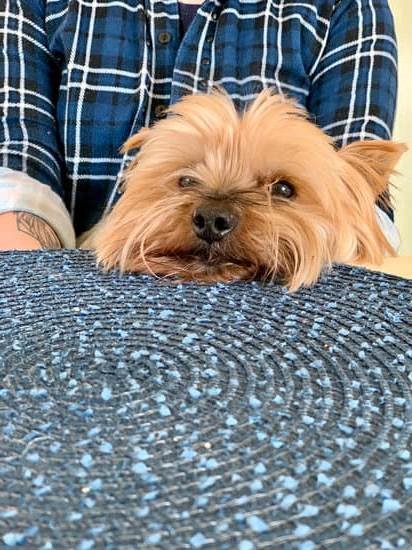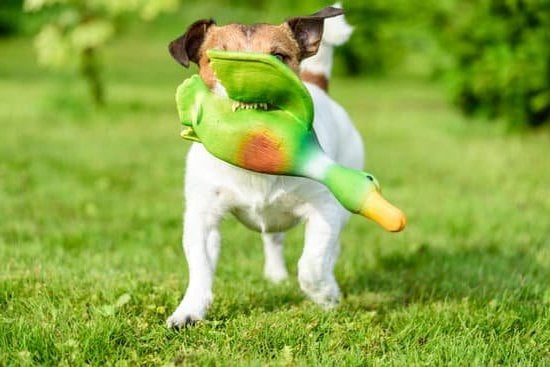Is your furry friend having accidents all over the house? If so, it may be time to learn how to pee train a dog. Pee training your dog can be a challenging but rewarding process that requires dedication, patience, and consistency. In this article, we will guide you through the basics of pee training for dogs and provide tips on how to successfully train your pup to do their business in the right place.
When it comes to pee training your dog, understanding the basics is crucial. From identifying the best age to start pee training to choosing the right pee training method for your dog’s breed and personality, there are several factors to consider. Additionally, creating a consistent pee training schedule and setting up a designated pee area for your dog are essential steps in the process.
In this comprehensive guide, we will cover everything you need to know about pee training your dog, including using positive reinforcement and rewards to encourage good pee behavior, dealing with accidents and setbacks during the training process, maintaining consistent habits for long-term success, as well as additional tips and tricks for successful pee training. By following these guidelines, you can establish good habits and achieve success in pee training your beloved canine companion.
Identifying the Best Age to Start Pee Training
When it comes to pee training your dog, timing is crucial. The best age to start pee training a dog is typically around 12-16 weeks old. This is the age when most puppies have enough control over their bladder and bowel movements to start learning where and when they should relieve themselves. However, it’s important to keep in mind that every dog is different, so some may be ready to start pee training earlier or later than others.
At this age, puppies are also more adaptable and can quickly learn new behaviors and habits, making it an ideal time to begin pee training. Starting the training process at a young age can help prevent potential behavior problems in the future and set the foundation for good bathroom habits.
It’s also important to remember that older dogs can still be successfully pee trained with patience and consistency. However, if you adopt an adult dog that hasn’t been properly pee trained, it may take more time and effort to break old habits and establish new ones.
| Age Range | Training Readiness |
|---|---|
| 8-12 weeks | Puppies are still developing bladder control but may be ready to start basic training |
| 12-16 weeks | Ideal age to begin formal pee training as puppies have better bladder control |
| 6 months or older | Older dogs can still be successfully trained but may require more time and patience |
Creating a Consistent Pee Training Schedule
Establishing Regular Meal Times
One of the key components of creating a consistent pee training schedule for your dog is establishing regular meal times. By feeding your dog at the same times each day, you can predict when they will need to go outside to relieve themselves. Most dogs will need to eliminate within 30 minutes to an hour after eating, so this can help you plan and schedule potty breaks accordingly.
Consistent Potty Breaks Throughout the Day
In addition to regular meal times, it’s important to take your dog outside for potty breaks at consistent intervals throughout the day. This may include first thing in the morning, after meals, before bedtime, and several times in between. The frequency of potty breaks will depend on your dog’s age, size, and overall health, but establishing a routine can help them understand when and where they should be going potty.
Monitoring Water Intake
Another aspect of creating a consistent pee training schedule is monitoring your dog’s water intake. Controlling when and how much water they drink can help regulate their bathroom habits and reduce accidents inside the house. Remember to offer water after playtime or exercise, as well as during hot weather, but try to limit access to water close to bedtime to minimize nighttime accidents.
By implementing these sub-sections into your pee training regimen, you can create a consistent schedule that sets your dog up for success in learning how to pee train a dog.
Choosing the Right Pee Training Method for Your Dog’s Breed and Personality
When it comes to pee training your dog, it’s important to consider the specific needs and characteristics of your furry friend. The right training method can vary depending on your dog’s breed and personality, so take the time to assess what approach will work best for them.
Understanding Your Dog’s Breed
Different dog breeds have different tendencies and behavioral traits that can impact their pee training. For example, some breeds are known to be more stubborn or independent, while others may be more eager to please. Researching your dog’s breed can give you valuable insight into the most effective pee training methods for them.
Assessing Your Dog’s Personality
In addition to considering your dog’s breed, it’s essential to take their individual personality into account when choosing a pee training method. Some dogs may respond well to a gentle and patient approach, while others may require more assertive leadership during the training process. Observe your dog’s behavior and reactions to different stimuli to better understand what approach will yield the best results.
Customizing the Training Method
Once you have a good understanding of your dog’s breed and personality, you can customize a training method that aligns with their needs. For example, if you have a high-energy breed, such as a Border Collie, incorporating plenty of physical activity into the pee training routine may be beneficial. On the other hand, if you have a more sensitive or timid dog, approaching the training process with extra gentleness and reassurance may be necessary.
By tailoring the pee training method to suit your dog’s specific traits and tendencies, you can set them up for success in developing good peeing habits.
Setting Up a Designated Pee Area for Your Dog
When deciding on the location of the designated pee area, it’s important to consider your dog’s breed and size. Smaller breeds may do well with indoor pee areas, while larger breeds may require outdoor options. Additionally, take into account your living situation and lifestyle when choosing the location for the designated pee area.
Once you have chosen the location for the pee area, make sure to accompany your dog to this spot every time they need to relieve themselves. Use verbal cues such as “go potty” or “do your business” to associate these commands with the act of peeing in the designated area.
Using positive reinforcement when your dog successfully uses the designated pee area is crucial. Rewarding them with treats or praise will help reinforce good behavior and encourage them to continue using their designated spot.
| Key Considerations for Designated Pee Area | Relevant Information |
|---|---|
| Location | Consider breed and size of dog, living situation, and lifestyle |
| Accompanying Your Dog | Accompany them every time they need to relieve themselves |
| Using Positive Reinforcement | Rewarding with treats or praise for using the designated spot |
Using Positive Reinforcement and Rewards to Encourage Good Pee Behavior
When it comes to pee training a dog, using positive reinforcement and rewards can be extremely effective in encouraging good behavior. Here are some tips on how to effectively use these methods to encourage your dog to pee in the designated area.
1. Use verbal praise: When your dog successfully pees in the designated area, be sure to offer plenty of verbal praise. Use a happy and enthusiastic tone of voice to let your dog know that they have done something good.
2. Offer treats: Another great way to reinforce good pee behavior is by offering your dog a small treat when they pee in the designated area. Choose a special treat that your dog loves and be sure to give it to them immediately after they finish peeing.
3. Use a consistent reward system: Consistency is key when it comes to pee training a dog. Be sure to consistently offer verbal praise and treats when your dog pees in the designated area. This will help them understand what is expected of them and encourage them to continue peeing in the right spot.
Additionally, it’s important to avoid punishing or scolding your dog for accidents during the pee training process. Instead, focus on using positive reinforcement to encourage good behavior. With time, patience, and consistent use of positive reinforcement, you can successfully pee train your dog.
Overall, using positive reinforcement and rewards can be incredibly effective in encouraging good pee behavior in dogs. By offering verbal praise, treats, and maintaining a consistent reward system, you can effectively communicate your expectations to your dog and encourage them to continue peeing in the designated area.
Maintaining consistent pee training practices will ultimately lead to long-term success in teaching your dog where it is appropriate for them to relieve themselves; this will also strengthen trust between you and your furry friend. Keeping this routine alive at all times & supporting their progress with love ultimately mandates favorable results sooner rather than later.
Dealing With Accidents and Setbacks During the Pee Training Process
Accidents and setbacks are a natural part of the pee training process for dogs. It is important for pet owners to understand that these occurrences should be expected and handled with patience and consistency. Here are some helpful tips for dealing with accidents during the pee training process:
- Stay calm: When accidents happen, it’s essential to remain calm and avoid overreacting. Reacting negatively can stress out your dog and make the situation worse.
- Clean up accidents properly: It’s crucial to clean up any accidents thoroughly to remove the scent and avoid future marking in the same spot. Use pet-friendly cleaning products to effectively eliminate odors.
- Revisit your dog’s pee training schedule: If accidents become frequent, it may be necessary to revisit your dog’s pee training schedule. Make sure you are taking your dog outside often enough, especially after meals, playtime, and naps.
It’s important for pet owners to remember that setbacks are a normal part of the pee training process. Dogs learn at their own pace, and each one is unique in their learning abilities. By maintaining patience and consistency, along with using positive reinforcement techniques, accidents can be minimized over time.
Additional tips for handling setbacks during pee training include providing mental stimulation through interactive toys or games to prevent boredom, as well as being mindful of any changes in your dog’s environment or routine that may contribute to accidents. With continued dedication and understanding, successfully pee training a dog is achievable.
Maintaining Consistent Pee Training Habits for Long-Term Success
Consistency is key when it comes to pee training your dog. Once you have established a pee training schedule and chosen the right method for your dog, it is important to maintain consistent habits for long-term success. This consistency will not only help your dog understand what is expected of them but also prevent any confusion or setbacks in their training.
One way to maintain consistency in pee training is to stick to a regular feeding schedule. By feeding your dog at the same times every day, you can predict when they will need to go outside to relieve themselves. This can help you anticipate when they are likely to need a bathroom break and reduce the chances of accidents indoors.
In addition to a regular feeding schedule, be sure to take your dog outside to their designated pee area at consistent times throughout the day. This can include first thing in the morning, after meals, before bedtime, and any other times when you notice signs that they may need to go. By providing these consistent opportunities for your dog to eliminate outside, you are reinforcing the desired behavior and setting them up for success in their pee training.
Consistency also applies to the use of positive reinforcement and rewards. Whenever your dog successfully pees in the designated area, be sure to praise them and offer a treat as a reward. This positive reinforcement helps reinforce good behavior and encourages your dog to continue using their designated pee area. By consistently rewarding good pee behavior, you are more likely to see long-term success in your dog’s pee training journey.
Additional Tips and Tricks for Successful Pee Training of Your Dog
In conclusion, pee training your dog may require time, patience, and consistency, but it is a crucial aspect of responsible pet ownership. By understanding the basics of pee training and identifying the best age to start, you can set your dog up for success in developing good bathroom habits.
Creating a consistent schedule and using the right training method for your dog’s breed and personality are essential steps in the process. Setting up a designated pee area and utilizing positive reinforcement and rewards can also aid in encouraging good behavior.
Dealing with accidents and setbacks during the pee training process is normal, so it’s important to remain patient and persistent. Remember to maintain consistent habits for long-term success, as dogs thrive on routine and structure. Additionally, incorporating additional tips and tricks such as monitoring water intake, regular bathroom breaks, and seeking professional help if needed can further support successful pee training of your dog.
In the end, pee training a dog requires commitment from the owner but can lead to a harmonious relationship with your furry companion. With dedication and care, you can teach your dog proper bathroom etiquette while strengthening your bond through this learning experience.
Frequently Asked Questions
How Long Does It Take to Pee Train a Dog?
The time it takes to potty train a dog can vary depending on the dog’s age, breed, and temperament. Typically, it can take anywhere from a few weeks to several months of consistent training for a dog to learn to pee in the appropriate spot.
How Do You Potty Train a Dog Fast?
To potty train a dog quickly, consistency is key. Establish a regular feeding schedule and take your dog outside frequently, especially after meals and naps. Use positive reinforcement such as treats and praise when they pee in the desired area.
How Long Does It Take to Train a Dog to Pee on Command?
Training a dog to pee on command can take some time and patience. This involves pairing the command with the act of peeing through consistent repetition and positive reinforcement. With consistent training, some dogs may be able to learn this in a matter of weeks, while others may take longer.

Welcome to the blog! I am a professional dog trainer and have been working with dogs for many years. In this blog, I will be discussing various topics related to dog training, including tips, tricks, and advice. I hope you find this information helpful and informative. Thanks for reading!





